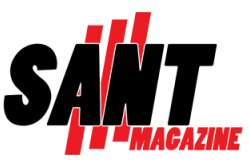In today’s unstable economy, risks abound. Nearly two-thirds of senior finance leaders in a recent study by North Carolina State University and the American Institute of Certified Public Accountants (AICPA) said that organization risks have increased “mainly” or “extensively” over the past five years.
Only one-third of respondents to the survey, 2022 State of Risk Oversight: An Overview of Enterprise Risk Management Practices, said they had entirely adopted enterprise risk management (ERM) practices. Risk exposure that is not controlled might harm your business and lead to bankruptcy. It is crucial that your business create a thorough risk-management strategy and that auditors evaluate your ERM procedures.
Ensure your organization is resilient and responsive by consulting an expert CPA in Herndon, VA.
Framework for COSO
The American Accounting Association, Financial Executives International, Institute of Internal Auditors, Institute of Management Accountants, and the AICPA collaborated to create the panel.
Enterprise Risk Management — Integrated Framework by COSO was initially released in 2004. In general, laws and regulations do not mandate that businesses use an ERM framework. However, companies frequently decide to use COSO’s ERM framework to strengthen their capacity for managing uncertainty, think through how much risk to accept, and expand their comprehension of possibilities as they boost and protect stakeholder value.
Broad range
The meaning of “ERM” is a term that many people are unsure of. ERM is a company-wide procedure that entails more than just keeping track of hazards. ERM is made up of many different components, including governance, stakeholder communication, strategy development, and internal control, to name just a few.
These guidelines are applicable to all organizational sizes, across all business levels, and across all functions. They apply to both for-profit and not-for-profit organizations.
Key elements
COSO seeks to document current best practices and assist management in getting more out of their ERM programs through periodic updates. How risk management should be integrated with an organization’s management of its strategy is an issue that the ERM framework attempts to answer. These five elements are contained in it:
- Strategy
- Objective setting
- Performance
- Review and amendment
- Communication, reporting, and information
Environmental, social, and governance (ESG) hazards are also highlighted in COSO’s Guidance for Applying ERM to ESG-related Risks. As firms deal with fresh and evolving hazards like harsh weather conditions or product safety recalls, this book also finds opportunities to strengthen resilience.

